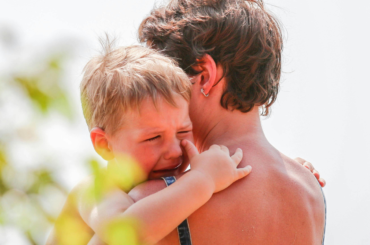This story was originally published by Chalkbeat. Sign up for their newsletters at ckbe.at/newsletters
This story is part of an ongoing collaboration with The Associated Press about education in the wake of the pandemic.
In Kansas City, Kansas, educators are opening an after-school mental health clinic staffed with school counselors and social workers. Schools in Paterson, New Jersey, have set up social emotional learning teams to identify students dealing with crises. Chicago is staffing up “care teams” with the mission of helping struggling students on its 500-plus campuses.
With a windfall of federal coronavirus relief money at hand, schools across the U.S. are using portions to quickly expand their capacity to address students’ struggles with mental health.
While school districts have broad latitude on how to spend the aid money, the urgency of the problem has been driven home by absenteeism, behavioral issues, and quieter signs of distress as many students have returned to school buildings this fall for the first time since the coronavirus pandemic hit.
“Now, the tone across the country is very focused on the well-being of students.”
For some school systems, the money has boosted long-standing work to help students cope with trauma. Others have launched new efforts to screen, counsel, and treat students. All told, the investments put public schools more than ever at the center of efforts to attend to students’ overall well-being.
“In the last recession, with the last big chunk of recovery money, this conversation wasn’t happening,” said Amanda Fitzgerald, the assistant director of the American School Counselor Association. “Now, the tone across the country is very focused on the well-being of students.”
Last month, three major pediatric groups said the state of children’s mental health should be considered a national emergency. The U.S. Education Department has pointed to the distribution of the relief money as an opportunity to rethink how schools provide mental health support. Mental well-being, Education Secretary Miguel Cardona has said, needs to be the foundation for the recovery from the pandemic.
The pandemic relief to schools totals $190 billion, more than four times the amount the Education Department typically spends on K-12 schools annually. Mental health investments have gone into staff training, wellness screenings, and curriculum dedicated to social-emotional learning.
Still, questions remain over how schools will find ways to make the benefits last beyond the one-time infusion of money, handle privacy concerns, and track the effectiveness of their efforts. The implementation worries Katie Dockweiler, a school psychologist in Nevada who sits on the state board of education.
 Charlie Riedel / AP
Charlie Riedel / AP“Not all programs are created equal,” she said. “It really comes down to how it’s implemented, school by school. And there’s great variability there.”
She said districts should develop ways of tracking the impact on students: “Otherwise, we’re just throwing our money away.”
At the top of the list for many districts has been hiring new mental health specialists. When the National Association of School Psychologists surveyed members this fall, more than half of respondents said their districts intended to add social workers, psychologists, or counselors, according to policy director Kelly Vaillancourt Strobach.
With $9.5 million from federal relief funding and outside grant money, Paterson schools added five behavioral analysts, two substance abuse coordinators, and the teams to spot students going through crises.
“I have more students just looking me in the eye and saying ‘I’m completely overwhelmed and I’m not sure how to handle it.’”
In Paterson, one of the lowest-income parts of the state, many of the 25,000 students faced food insecurity before the pandemic and struggled after family members lost jobs, Superintendent Eileen Shafer said.
“We wanted to make sure before we try to teach anything new, that we’re able to deal with where our children are right now based on what they’ve been through,” she said.
In rural Ellicottville, New York, where school psychologist Joe Prior is seeing more anxiety and a “significant increase” in panic attacks, the district wants to use rescue funds to hire a counselor to connect students with psychological help. But the position remains unfilled, as few expressed interest.
“I have more students just looking me in the eye and saying ‘I’m completely overwhelmed and I’m not sure how to handle it,’” Ellicottville high school principal Erich Ploetz said.
 Carolyn Thompson / AP
Carolyn Thompson / APIt’s not the only district where ambitions for hiring have outstripped the number of available professionals. Some districts have turned to outside vendors to help fill mental health positions, while others are training existing staff.
The Kansas City, Kansas, school system is using some of the $918,000 in relief money dedicated to mental health to pay social workers and counselors already on staff to work at the new after-school clinic. The district also has added staff and mental health screenings.
Angela Dunn, who leads the 23,000-student district’s mental health and suicide prevention initiatives, said the mental health team has responded to 27 student deaths and 16 staff deaths since the pandemic started, double what is typical during that period. She said a handful of staff members died of COVID-19, but the rest were homicides, suicides, and overdoses.
“We just recognized that students are comfortable seeking help in a school setting.”
The investments by schools in student mental health services have raised some privacy concerns, especially where schools are now monitoring student computers for distress signals or administering mental health screenings to all students. But the idea that it’s not the place of schools to involve themselves at all has receded.
“We just recognized that students are comfortable seeking help in a school setting,” Dunn said.
Chicago, the nation’s third-largest school district, unveiled a “healing plan” for students, using $24 million of its $2.6 billion in stimulus funds.
Over three years, the district will expand “care teams” — building staff who serve as the frontline response for struggling students — to each campus. The goal is to reach 200 schools by spring.
High school principal Angélica Altamirano used some of that funding to open a space outfitted with cozy furniture and a hand-me-down air hockey table. Already, the campus center has offered grief groups for students whose family members or friends have died and helped teachers dealing with burnout.
 Charlie Riedel / AP
Charlie Riedel / APIn Topeka, Kansas, $100,000 was budgeted for calming items and staff for sensory rooms, including one at Quincy Elementary. When students get so frustrated that they put their heads down on their desk, or wander into the hallway or cry, teachers can send them to the Roadrunner Room. There, they can climb into a tent and snuggle under a weighted blanket, put a puzzle together, play with sand, or build with Legos.
Dean of students Andrea Keck has watched the room become a go-to place for one student to work out frustrations.
“She can journal it, get her hair put up, whatever she needs, and then she is successful the rest of the day,” said Keck, who oversees the room.
In Detroit, the district is spending $34 million on mental health initiatives, including screening students, expanding help from outside mental health providers, and offering extra support to parents.
“As a community we have all been through something.”
On a recent Wednesday, that meant an hourlong meditation session for parents at a local coffee shop. One attendee worried her own stress was affecting her son’s ability to learn.
“As a community we have all been through something,” said Sharlonda Buckman, an assistant superintendent who participated in the session. “Part of recovery has to be some intentional work in spaces like this, so we can be there for our kids.”
Chalkbeat writers Catherine Carrera in Newark, New Jersey, Cassie Walker Burke in Chicago, and Lori Higgins in Detroit, and Associated Press writer Collin Binkley in Boston contributed to this report. Thompson reported from Ellicottville, New York, and Hollingsworth from Mission, Kansas.
Chalkbeat is a nonprofit news site covering educational change in public schools.







